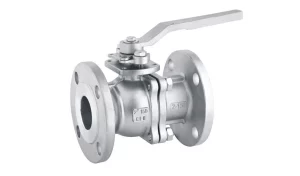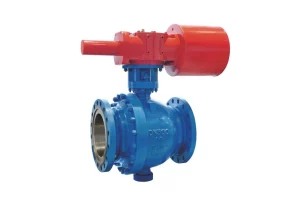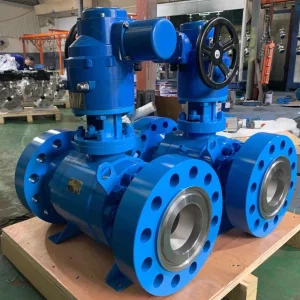Ball Valve vs Regular Valve: An In-Depth Comparative Analysis
Understanding Ball Valves and Regular Valves
Basic Functionality
Ball valves and regular valves serve the primary function of controlling the flow of fluids within a system. A ball valve uses a spherical disc, or ball, to open and close the flow path. The ball has a hole through its center, which aligns with the flow path when open and blocks it when closed. This design allows for quick shut-off and is known for its reliable sealing capabilities.
Regular valves, on the other hand, encompass a variety of types such as gate valves, globe valves, and butterfly valves. Each operates using different mechanisms suited to specific applications. For instance, gate valves use a sliding gate to block fluid flow, while globe valves regulate flow through a movable plug.
Key Components and Structure
The ball valve consists of several key components: the valve body, ball, stem, seats, and actuator. The valve body houses all internal components. The ball is held in place by the seats that ensure a tight seal. The stem connects the ball to an external actuator or handle for operation.
In contrast, regular valves like gate or globe valves have more complex structures. Gate valves feature a rising or non-rising stem connected to a gate that moves up or down within guides to open or close the valve. Globe valves have a movable plug or disc that throttles flow by moving perpendicular to the seat.
Differences in Mechanism and Operation
How Ball Valves Operate
Ball valves operate by rotating the ball 90 degrees around its axis using an external handle or actuator. This rotation either aligns the hole in the ball with the flow path (open) or turns it perpendicular (closed). Miwival ball valves are engineered to ensure bubble-tight shutoff and low operating torque, which makes them efficient for quick operation.
How Regular Valves Operate
Regular valves operate differently based on their design. Gate valves require turning a wheel to raise or lower a gate within guides until it fully opens or closes. This action provides minimal resistance when fully open but is less suitable for throttling applications due to potential wear on the seating surfaces.
Globe valves adjust the flow by moving a plug against a stationary ring seat in an axial direction. This design allows precise control over flow rates but results in higher pressure drops compared to other types.
Applications and Suitability
Where to Use Ball Valves
Ball valves are ideal for applications requiring reliable shut-off without pressure drop issues. They are commonly used in pipelines where quick opening and closing are necessary. The ball structure of the ball valve makes it suitable for high-pressure and large-diameter pipeline systems due to its strong flow capacity and low resistance.
Appropriate Uses for Regular Valves
Regular valves like gate and globe types are better suited for applications needing precise control over flow rates rather than quick shut-off. Gate valves excel in fully open/close scenarios with minimal pressure loss but aren’t ideal for throttling tasks due to seat wear concerns.
Globe valves provide excellent throttling capabilities thanks to their linear motion design but incur higher pressure losses as fluid navigates through multiple directional changes inside these devices.
Performance and Efficiency Comparison
Evaluating the Performance of Ball Valves
Ball valve performance excels in scenarios demanding swift actuation times coupled with dependable sealing properties across diverse media types including liquids containing slurries or solids such as mud mixtures where reduced steps minimize potential clogging issues during operation cycles, highlighting their versatility across industrial sectors from petrochemicals refining processes down towards civil pipeline management systems handling water distribution networks efficiently under varying conditions encountered daily worldwide today.
Evaluating the Performance of Regular Valves
Regular valve performance varies significantly depending upon the specific type employed within a given application context—gate designs offer minimal resistance once fully opened yet struggle to maintain effective throttle control whereas globes provide superior modulation abilities albeit at cost-increased pressure drops experienced throughout the entire operational lifecycle potentially impacting energy consumption metrics negatively if improperly sized selected initially during planning stages prior installation commencement activities undertaken subsequently thereafter accordingly adjusted meet evolving demands placed upon them dynamically over the period involved therein respectively.
Material and Durability Considerations
Material Choices for Ball Valves
Ball valves are crafted using materials that enhance their durability and performance. Common materials include stainless steel, brass, and PVC. Stainless steel is favored for its corrosion resistance and strength, making it suitable for high-pressure applications. Miwival ball valves, for instance, are engineered with resilient seat materials that ensure bi-directional, bubble-tight sealing. These valves feature relief slots on the seat’s outer diameter to relieve pressure past the upstream seat in case of an upset situation such as trapped gas in the valve body. This design ensures long-term reliability and minimal maintenance.
Material Choices for Regular Valves
Regular valves are made from a variety of materials depending on the type and application. Gate valves might use cast iron or ductile iron for their bodies, while globe valves often incorporate bronze or brass. The choice of material affects the valve’s ability to withstand pressure, temperature variations, and corrosive environments.
Cost Implications and Economic Factors
Cost Analysis of Implementing Ball Valves
The cost of implementing ball valves can vary based on size, material, and specific features such as actuation type. Ball valves generally have a higher upfront cost compared to some regular valves due to their robust construction and sealing capabilities. However, their long-term economic benefits often outweigh initial expenses. Miwival ball valves utilize an independent packing gland that can be easily adjusted without removing mounting hardware or operator, ensuring maintenance-free operation and long cycle life. This reduces downtime and associated costs over time.
Cost Analysis of Implementing Regular Valves
Regular valves like gate and globe types typically have lower initial costs but may incur higher maintenance expenses due to more complex structures prone to wear over time. The cost-effectiveness of these valves depends heavily on application-specific requirements such as flow control precision or pressure drop considerations.
Introducing Miwival Products and Application Areas
Miwival offers a diverse range of valve products designed to meet varying industrial needs. Our segment ball valve provides accurate control over a wide range even at low flow rates with MC-pulp (8-19%). The V-port segment valve is an economical high-performance control valve designed for liquid, gas, vapor, and slurry control applications, making it ideal for industries requiring high capacity and wide rangeability solutions.
In addition to segment ball valves, Miwival’s product line includes pneumatic ball valves known for ensuring bubble-tight shutoff with low operating torque, features particularly advantageous in petrochemical refining processes where reliable sealing under fluctuating pressures is critical. Moreover, Miwival flanged ball valve caters to pipeline systems needing robust yet easy-to-operate solutions across diverse sectors from civil water distribution networks down to chemical processing facilities demanding precise medium flow regulation capabilities under stringent safety protocols adhered globally today.
Offering versatile mounting orientations alongside anti-blowout shafts within their product designs combined with fire-safe certification according to API 607 standards ensures customers receive not only top-tier performance metrics but peace of mind knowing the equipment installed meets the highest industry benchmarks set forth by governing bodies worldwide thus reinforcing commitment delivering excellence every step way forward!








